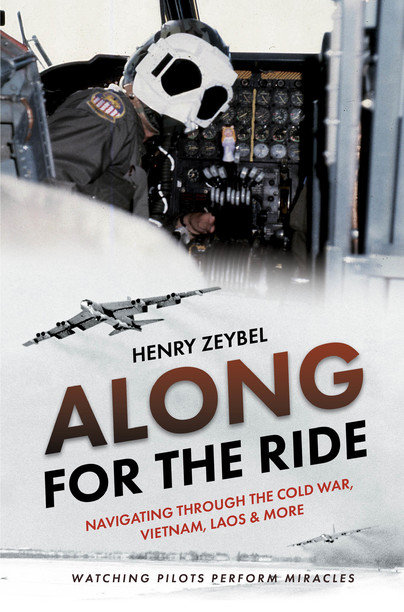
Format: Hardback
Pages: 288
ISBN: 9781636240381
Pub Date: 15 Dec 2021
Description:
During Hank Zeybel's first tour in Vietnam he flew 772 C130 sorties as a navigator. He volunteered for a second tour, requesting assignment to B26s so he could "shoot back." When B26s were removed from the inventory, he accepted a Spectre gunship crew slot, flying truck-busting missions over the Ho Chi Minh Trail.
He describes the terror of flying through heavy AA fire over the trail, and the heroics of the pilots in bringing their crews through. Away from the war he recalls leave back in the US, his elderly father bewildered by his war-hardened attitude and black sense of humor. Contextualising his time with Spectre gunships, he compares his experiences with those of other airmen, like Phil Combies and Robin Olds, and his broader Air Force career - he joined upon graduating university in 1955 and his first operational assignment was as a B47 Stratojet navigator-bomber at Strategic Air Command - trained to drop thermonuclear bombs with precision. From 1957 to 1963, he logged over two thousand hours as a radar-bombardier in B47 Stratojets and B52 C-models. In this memoir of Vietnam, his Air Force career and his second career as a journalist and writer, Zeybel's admiration of the skill and bravery of pilots - many of whom who he depended on for his very survival - shines through his desciptions of combat missions and being "along for the ride."
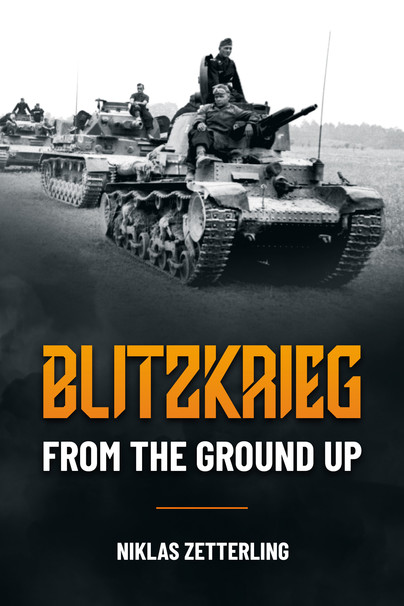
Format: Paperback
Pages: 336
ISBN: 9781636240558
Pub Date: 15 Dec 2021
Description:
The successes of the German Blitzkrieg in 1939–41 were as surprising as they were swift. Allied decision-makers wanted to discover the secret to German success quickly, even though only partial, incomplete information was available to them. The false conclusions drawn became myths about the Blitzkrieg that have lingered for decades.
It has been argued that German victories in the early part of the war rested less upon newly developed tanks and aircraft and more on German military traditions: rather than creating a new way of war based on new technology, the Germans fitted the new weapons into their existing ideas on warfare. These doctrines focused on independent action, initiative, flexibility, decentralized decision-making and mobility. The conduct of German soldiers, particularly the lower-ranking men, on the battlefield was at the core of the concept and German victories rested upon the quality of the small combat units.This book focuses on the experience of the enlisted men and junior officers in the Blitzkrieg operations in Poland, Norway, Western Europe and Russia. Using accounts previously unpublished in English, military historian Niklas Zetterling explores how they operated, for example how a company commander led his tanks, how a crew worked together inside a tank, and the role of the repair services. The author fits these narratives into a broader perspective to give the reader a better understanding of why the Germans were so successful in 1939–41.

Format: Hardback
Pages: 264
ISBN: 9781612009919
Pub Date: 15 Dec 2021
Description:
For the first two weeks of the Easter Offensive of 1972, the 571st Military Intelligence Detachment provided the only pertinent collateral intelligence available to American forces. Twice daily, the Detachment provided intelligence to the USS Buchanan (DDG-14), US Navy SEALS and Special Forces units including tactical and strategic forecasts of enemy movements, information that was otherwise unavailable to U.S.
units and advisors in-country. In the weeks before the offensive, vital agent reports and verbal warnings by the 571st MI Detachment had been ignored by all the major commands; they were only heeded, and then only very reluctantly, once the Offensive began. This refusal to listen to the intelligence explains why no Army or USMC organizations were on-call to recover prisoners discovered or U.
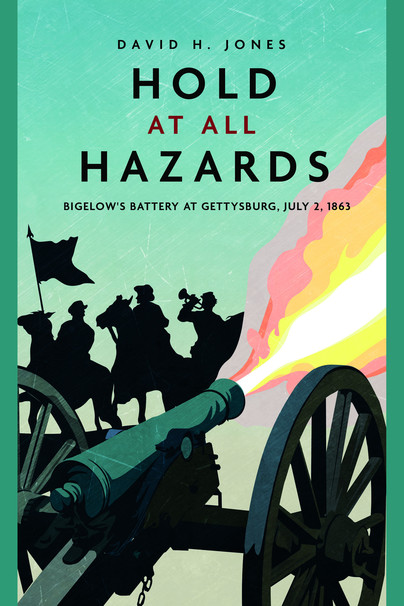
Format: Paperback
Pages: 272
ISBN: 9781636240602
Pub Date: 15 Dec 2021
Illustrations: Illustrations and maps
Description:
By late January of 1863, the 9th Massachusetts Battery of Light Artillery has been stationed within the Washington, D.C. defenses the entirety of its five-month existence.
The soldiers are badly demoralized, inadequately trained and poorly disciplined. When the inept captain of the battery believes that he's about to be fired, he hastily resigns, and the governor of Massachusetts promptly selects a twenty-three-year-old artillery officer with battlefield experience to take command. Captain John Bigelow institutes strict discipline and rigorous training which causes the men, including Chief Bugler Charles Wellington Reed, to consider him to be a heartless tyrant. However, Captain Bigelow's methods rapidly improve their capabilities and Reed reluctantly gains respect for the new captain. Nevertheless, subtle conflict between captain and bugler remains in a manner only constrained by military protocol. In late June of 1863 the battery is collected by the Army of the Potomac as it passes the Washington defenses to thwart an invasion by Robert E. Lee's Army of Northern Virginia. After days of hard marching, Bigelow's Battery arrives on the Gettysburg battlefield in the forenoon of July 2, 1863. Within hours they are immersed in violent combat during which the officers and men of the battery fight like veterans against the Confederates. Unbeknownst to Charlie, he will twice disobey a direct order from Captain Bigelow before the day is out. When furious fighting reaches a crescendo, the inexperienced light artillery battery is ordered to hold its position at all hazards, meaning until it's overrun. Without hesitation the batterymen stand to their guns and sacrifice their life's blood to gain the time necessary for a second line of artillery to be formed behind them, thus helping to prevent a disastrous defeat for the Federal Army on Northern soil. Charlie saves his captain's life and is later awarded the Medal of Honor.
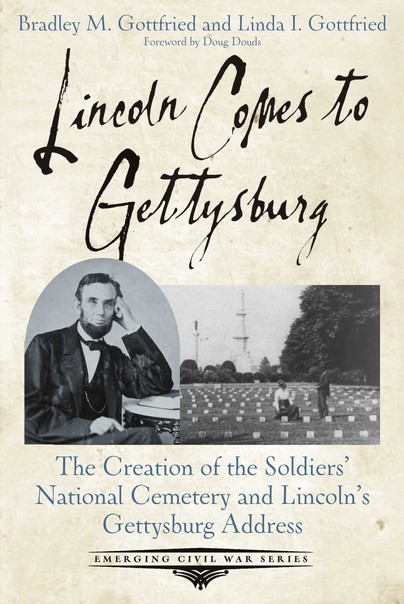
Format: Paperback
Pages: 192
ISBN: 9781611215595
Pub Date: 15 Dec 2021
Illustrations: 180 images, 10 maps
Description:
Almost 8,000 dead dotted the fields of Gettysburg after the guns grew silent. The Confederate dead were hastily buried, but what of the Union dead? Several men hatched the idea of a new cemetery to bury and honor the Union soldiers just south of town.
Their task was difficult to say the least.First, appropriate land needed to be identified and purchased. After the State of Pennsylvania purchased the 17 acres, a renowned landscape architect designed the layout of the cemetery. All was now ready for the bodies to be interred from their uneasy resting places around the battlefield, placed in coffins, marked with their names and units, and transported to the new cemetery to be permanently reinterred. More than 3,500 men were moved to the Soldiers National Cemetery.As these tasks gained momentum, so too did planning for the cemetery’s consecration or dedication. A committee of agents from each state who had lost men in battle worked out the logistics. Most of the program was easily decided. It would be composed of odes, singing, prayers, and remarks by the most renowned orator in the nation, Edward Everett. The committee argued over whether President Abraham Lincoln should be invited to the ceremony and, if so, his role in the program. The committee, divided by politics, decided on a middle ground, inviting the President to provide “a few appropriate remarks.”To the surprise of many, Lincoln accepted the invitation, for the most part crafted his remarks in the Executive Mansion, and headed to Gettysburg, arriving on the evening of November 18, 1863. The town was filled with thousands expecting to witness the “event of the century.” Lincoln completed his remarks and, the following day, mounted a horse to join the procession heading for the cemetery. The program was unremarkable, except for Lincoln’s remarks, whose reception was split along party lines.Lincoln Comes to Gettysburg: The Creation of the Soldiers’ National Cemetery and Lincoln’s Gettysburg Address by Bradley M. Gottfried and Linda I. Gottfried recounts the events surrounding the creation of the Soldiers’ National Cemetery, its dedication, and concentrates on Lincoln’s visit to Gettysburg on November 18- 19, 1863.

Format: Hardback
Pages: 392
ISBN: 9781636240138
Pub Date: 15 Dec 2021
Illustrations: maps and photographs
Description:
After the shocking fall of France in June 1940, the U.S. Army embarked on a crash program to establish a new armored force.
One of the units formed was the 756th Tank Battalion (Light), activated at Fort Lewis in June 1941. Because of severe equipment shortages, the new battalion trained without tanks for several months, but by early 1942 were equipped with new M3 light tanks. While companies A and C took part in Operation Torch, B was withheld for lack of cargo space in the transport ships and re-joined the battalion two months later in north Africa. The units undertook reconnaissance missions following the landings in Salerno. In December 1943 the battalion was ordered to upgrade to a medium tank (Sherman) unit. Given less than a month to reorganize and train in M4s, the battalion was sent into the Mignano Gap on January 11, 1944 and supported the 34th Infantry Division in the capture of Cervaro and Monte Trocchio. Later in January B Company supported the troops of the 100th Battalion on bloody but ill-fated attempts to cross the Rapido river - finally at the third attempt the battalion established a secure bridgehead across the Rapido. During the next two days the nearby town of Caira was also captured, opening a clear avenue for an attack on Cassino. Based on decades of research, and hours of interviews with veterans of the 756th Tank Battalion, Jeff Danby's vivid narrative puts the reader in the turret of B Company's Shermans as they ride into battle. Endorsements: “This is an excellent, in-depth, day-to-day account of the operations of one tank company of a US independent tank battalion, B Company, 756th Tank Battalion, in World War II… With its focus on tank crew members and their commanders this is a unique addition to the literature on WWII.”––A. Harding Ganz, Associate Professor Emeritus of the Ohio State University at Newark, author of Ghost Division “It is very rare to find a book that takes the reader down to the close and personal level of a company of men in battle. We have seen that for paratroopers in Band of Brothers and now we have it for a tank unit, in this case Company B of the 756th Tank Battalion. And what a remarkable book it is … the book is very hard to put down and by the end of it I found myself looking forward to reading the next volume.”––Jeffrey Plowman, author of Rampant Dragons: New Zealander’s Experience in Armour in World War II, Tank Attack at Monte Cassino: The Cavendish Road Operation 1944 and The Battles for Cassino Then and Now “[Danby] brings all his considerable skills to this unique Battalion level history. No lead is left unfollowed and this adds not only to the legitimacy of his work but also tells the personal story of these valiant men … It may be the best US armored unit history ever put together so long after the conflict … For the small unit historian of the Armored Units of the Second World War, I cannot recommend this book more highly.”––Victor Failmezger, author of American Knights, the Untold Story of the Legendary 601th Tank Destroyer Battalion “Jeff Danby weaves an empathetic tale of people in his history of Company B, 756th Tank Battalion. From the very start, he frames portentous global events in terms of how the young men who would fight the war would have seen them. Danby’s prose is punchy, visually evocative, and entertaining.”––Harry Yeide, author of The Tank Killers, The Infantry’s Armor, and Steeds of Steel “Danby introduces and develops an extensive cast of personalities, average American soldiers, as they experience combat and the quiet periods in-between, and gives the reader precious insight in to why this unit was so combat proficient. Jeff has written another great story which I recommend to everyone interested in WWII and especially tank units in that war.”––LTC Timothy R. Stoy, U.
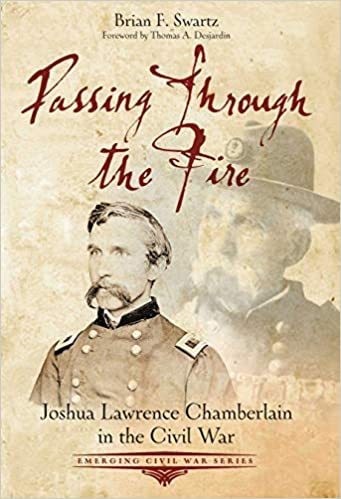
Format: Paperback
Pages: 192
ISBN: 9781611215618
Pub Date: 15 Dec 2021
Illustrations: 180 images, 10 maps
Description:
As the brigade he commanded attacked a Confederate battery on a hill outside Petersburg in July 1864, a bursting shell blew Col. Joshua L. Chamberlain from the saddle and wounded his horse.
After the enemy battery skedaddled, the brigade took the hill and dug in, and up came supporting Union guns.Chamberlain figured the day’s fighting ended. Then an unidentified senior officer ordered his brigade to charge and capture the heavily defended main Confederate line. Chamberlain protested the order, then complied, taking his men forward—until a bullet slammed through his groin and left him mortally wounded.Miraculously surviving a nighttime battlefield surgery, he returned home to convalesce as a brigadier general following an impromptu deathbed promotion. Struggling with pain and multiple surgeries, Chamberlain debated leaving the army or returning to the fight.His decision affected upcoming battles, his family, and the rest of his life.Passing Through the Fire: Joshua Lawrence Chamberlain in the Civil War chronicles Chamberlain’s swift transition from college professor and family man to regimental and brigade commander. A natural leader, he honed his fighting skills at Shepherdstown and Fredericksburg. Praised by his Gettysburg peers for leading the 20th Maine Infantry’s successful defense of Little Round Top—an action that would eventually earn him Civil War immortality—Chamberlain experienced his most intense combat after arriving at Petersburg.Drawing on Chamberlain’s extensive memoirs and writings and multiple period sources, historian Brian F. Swartz follows Chamberlain across Maryland, Pennsylvania, and Virginia while examining the determined warrior who let nothing prevent him from helping save the United States.
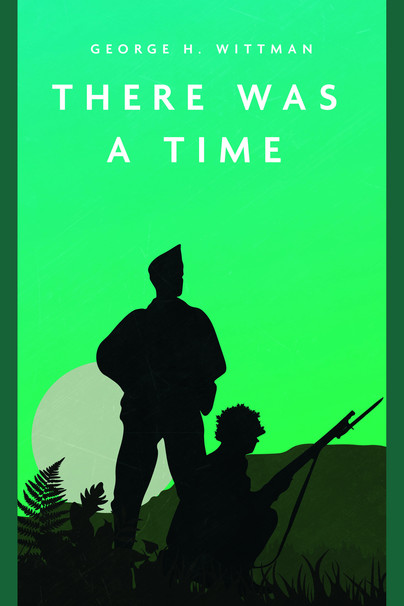
Format: Paperback
Pages: 312
ISBN: 9781636240442
Pub Date: 15 Dec 2021
Description:
It is the summer of 1945, the last and very dangerous days of World War II. The Office of Strategic Services is in close, cooperative contact with Ho Chi Minh and the fighting cadre of the Viet Minh, working against the Japanese. In the closing months of the war, the OSS parachute a team of special operations soldiers into Tonkin, northern Viet Nam.
Led by Major John Guthrie and his second-in-command, Captain Edouard Parnell, both experienced officers from their earlier assignments in occupied France and Belgium, the team are tasked with working with Ho Chi Minh against the Japanese in the midst of various groups vying for control of Indochina. Guthrie and his team have to adapt to the entirely different context of Vietnamese politics in order to encourage communist operations against the Japanese. Guthrie in particular, struggles with both his personal and professional conflicts. The relationship that Guthrie and the rest of the OSS team develops with the Viet Minh leadership is of distinct annoyance to French ambitions to regain control of their colony, Indochina.Based on the little-known true story of American and Viet Minh collaboration in 1945, this novel challenges the later-accepted dogma of both those supporting and those opposing the American role in the Viet Nam conflict. This novel notes how what is seen at a later time is often inadequate to understand what actually went on. Its contemporary relevance is simply a mirror of what is always the case in international affairs: today's enemies can and may be tomorrow's friends - and most importantly, the reverse is true also.

Format: Hardback
Pages: 384
ISBN: 9781636240725
Pub Date: 15 Dec 2021
Illustrations: 12 photographs and 1 map
Description:
As historian David W. Bright noted in Race and Reunion: The Civil War in American Memory, "No other historical experience in America has given rise to such a massive collection of personal narrative 'literature' written by ordinary people." This "massive collection" of memoirs, recollections and regimental histories make up the history of the Civil War seen through the eyes of the participants.
This work is an overview of what Civil War soldiers and veterans wrote about their experiences. It focusses on what veterans remembered, what they were prepared to record, and what they wrote down in the years after the end of the war. In an age of increased literacy many of these men had been educated, whether at West Point, Harvard or other establishments, but even those who had received only a few years of education chose to record their memories. The writings of these veterans convey their views on the cataclysmic events they had witnessed but also their memories of everyday events during the war. While many of them undertook detailed research of battles and campaigns before writing their accounts, it is clear that a number were less concerned with whether their words aligned with the historical record than whether they recorded what they believed to be true. This book explores these themes and also the connection between veterans writing their personal war history and the issue of veterans’ pensions. Understanding what these veterans chose to record and why is important to achieving a deeper understanding of the experience of these men who were caught up in this central moment in American life.
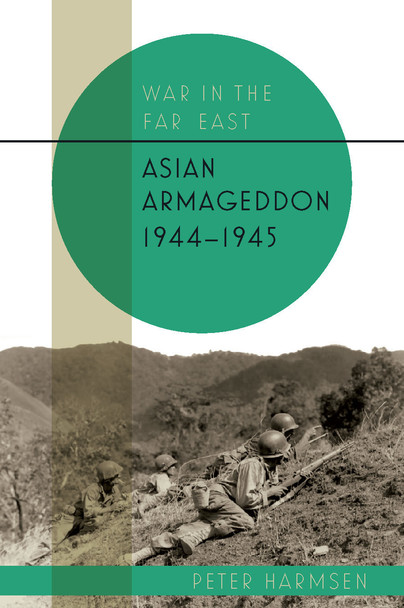
Format: Hardback
Pages: 272
ISBN: 9781612006277
Pub Date: 10 Dec 2021
Series: War in the Far East
Illustrations: 30 b/w photographs
Description:
The last instalment of the War in the Far East trilogy, Asian Armageddon 1944-1945, continues and completes the narrative of the first two volumes, describing how a US-led coalition of nations battled Japan into submission through a series of cataclysmic encounters. Leyte Gulf, the biggest naval battle ever, was testimony to the paramount importance of controlling the ocean, as was the fact that the US Navy carried out the only successful submarine campaign in history, reducing Japan's military and merchant navies to shadows of the former selves. Meanwhile, fighting continued in disparate geographic conditions on land, with the chaos of Imphal, the inferno of Manila, and the carnage of Iwo Jima forming some of milestones on the bloody road to peace, sealed in Tokyo Bay in September 1945.
The nuclear blasts at the end of the war made one observer feel as if he was ‘present at the creation’. Indeed, the participants in the events in the Asia Pacific in the mid-1940s were present at the creation of a new and dangerous world. It was a world where the stage was set for the Cold War and for international rivalries that last to this day, and a new constellation of powers emerged, with the outlines, just over the horizon, of a rising China. War in the Far East is a trilogy of books comprising a general history of World War II in the Asia Pacific. Unlike other histories on the conflict it goes into its deep origins, beginning long before Pearl Harbor, and encompasses a far wider group of actors to produce the most complete account yet written on the subject and the first truly international treatment of this epic conflict. Author Peter Harmsen weaves together complex events into a revealing and entertaining narrative, including facets of the war that may be unknown even to avid readers of World War II history, from the mass starvations that cost the lives of millions across China, Indochina and India to the war in subarctic conditions in the Aleutians. Harmsen pieces together the full range of perspectives, reflecting what war was like both at the top and on the ground.

Format: Hardback
Pages: 304
ISBN: 9781636240428
Pub Date: 10 Dec 2021
Illustrations: b/w images throughout
Description:
When the U.S. Army went to war in South Vietnam in 1965, the general consensus was that counterinsurgency was an infantryman's war; if there was any role at all for armored forces, it would be strictly to support the infantry.
However, from the time the 11th Armored Cavalry Regiment arrived in country in September 1966, troopers of the Blackhorse Regiment demonstrated the fallacy of this assumption. By the time of Tet '68, the Army's leadership began to understand that the Regiment's mobility, firepower, flexibility, and leadership made a difference on the battlefield well beyond its numbers.Over the course of the 11th Cavalry's five-and-a-half years in combat in South Vietnam and Cambodia, over 25,000 young men served in the Regiment. Their stories - and those of their families - represent the Vietnam generation in graphic, sometimes humorous, often heart-wrenching detail. Collected by the author through hundreds of in-person, telephone, and electronic interviews over a period of 25-plus years, these "war stories" provide context for the companion volume, The Blackhorse in Vietnam.Amongst the stories of the Blackhorse troopers and their families are the tales of the wide variety of animals they encountered during their time in combat, as well as the variable landscape, from jungle to rice paddies, and weather. Blackhorse Tales concludes with a look at how the troopers have dealt with their combat experiences since returning from Vietnam. Between the chapters are combat narratives, one from each year of the Regiment's five-and-a-half years in Southeast Asia. These combat vignettes begin on 2 December 1966, when a small column of 1st Squadron vehicles and troopers were ambushed on Highway 1 and emerged victorious despite being outnumbered. They go on to describe the one-of-a-kind crossing of the Dong Nai River on 25 April 1968, as the Blackhorse Regiment rode to the rescue during Mini-Tet 1968, and the 2nd Squadron's fight to clear the Boi Loi Woods in late April 1971.

Format: Hardback
Pages: 264
ISBN: 9781636240046
Pub Date: 10 Dec 2021
Description:
Many believe that World War I was only fought "over there," as the popular 1917 song goes, in the trenches and muddy battlefields of Northern France and Belgium - they are wrong.There was a secret war fought in America; on remote railway bridges and waterways linking the United States and Canada, aboard burning and exploding ships in the Atlantic Ocean, in the smoldering ruins of America's bombed and burned-out factories, munitions plants and railway centers and waged in carefully disguised clandestine workshops where improvised explosive devices and deadly toxins were designed and manufactured. It was irregular warfare on a scale that caught the United States woefully unprepared.
This is the true story of German secret agents engaged in a campaign of subversion and terror on the American homeland before and during World War I.

Format: Hardback
Pages: 256
ISBN: 9781636240114
Pub Date: 10 Dec 2021
Illustrations: maps and photographs
Description:
In an era of battlefield one-upmanship, the raid on the Nation's capital in July 1864 was prompted by an earlier failed Union attempt to destroy Richmond and free the Union prisoners held there. Jubal Early's mission was in part to let the North have a taste of its own medicine by attacking Washington and freeing the Confederate prisoners at Point Lookout in southern Maryland. He was also to fill the South's larder from unmolested Union fields, mills and barns.
By 1864 such southern food raids had become annual wartime events. And he was to threaten and, if possible, capture Washington. This latter task was unrealistic in an age when the success of rifle fire was judged to be successful not by accuracy, but by the amount of lead that was shot into the air. Initially, the Union defenders of the city were largely former slaves, freemen, mechanic, shopkeepers and government clerks, as well as invalids. They might not have known much about riflery and accuracy, but they were capable of putting ample lead on the long until Regular Union regiments arrived. Jubal Early hesitated in attacking Washington, but he held the City at bay while his troops pillaged the countryside for the food Lee's Army needed to survive.This new account focuses on the reasons, reactions and results of Jubul Early's raid of 1864. History has judged it to have been a serious threat to the capital, but James H. Bruns examines how the nature of the Confederate raid on Washington in 1864 has been greatly misinterpreted - Jubal Early's maneuvers were in fact only the latest in a series of annual southern food raids. It also corrects some of the thinking about Early's raid, including the reason behind his orders from General Lee to cross the Potomac and the thoughts behind the proposed raid on Point Lookout and the role of the Confederate Navy in that failed effort. It presents a new prospective in explaining Jubal Early's raid on Washington by focusing on why things happened as they did in 1864. It identifies the cause-and-effect connections that are truly the stuff of history, forging some of the critical background links that oftentimes are ignored or overlooked in books dominated by battles and leaders.

Format: Hardback
Pages: 224
ISBN: 9781636240862
Pub Date: 10 Dec 2021
Series: Casemate Illustrated Special
Illustrations: Over 200 photographs, diagrams and artwork
Description:
When HMS Dreadnought was commissioned into the Royal Navy in 1906 this revolutionary new class of big-gun iron-clad warship immediately changed the face of naval warfare, rendering all other battleships worldwide obsolete. The Admiralty realised that as soon as the ship was revealed to the global naval community Britain would be a in race to stay ahead, and so the first dreadnoughts were built in record time. While there were those who regarded the vessel as a triumphant revolution in naval design, the dreadnought initially had its critics, including those who thought its slower, heavier guns left it vulnerable to the secondary armament of other warships.
Nevertheless, other countries, notably Germany, and the United States soon began to lay down dreadnoughts. The culmination of this arms race would be the confrontation of the British and German fleets at the Battle of Jutland in May 1916 - the greatest clash of naval firepower in history. This book gives detailed insights into the design, operation and combat history of these incredible vessels.

Format: Hardback
Pages: 192
ISBN: 9781636240909
Pub Date: 10 Dec 2021
Series: Casemate Illustrated Special
Illustrations: 150 photographs and illustration
Description:
This book provides an overview of the victory markings painted on the fins and rudders of the planes of the German day fighter and night fighter aircraft between 1939 and 1945, and demonstrates how these were applied in reality through the profiles of nineteen pilots, including some of the most emblematic pilots of the Luftwaffe: Hans Troitzsch, Johannes Gentzen, Frank Liesendahl, Wilhelm Balthasar, Otto Bertram, Joachim Müncheberg, Karl-Heinz Koch, Kurt “Kuddel” Ubben, Felix-Maria Brandis, "Fiffi" Stahlschmidt, Franz-Josef Beerenbrock, Heinrich Setz, Walter "Gulle" Oesau, Max-Hellmuth Ostermann, Heinrich Bartels, "Fritz" Dinger, Martin Drewes, Egmont zur Lippe-Weissenfeld and Ludwig Meister.

Format: Hardback
Pages: 244
ISBN: 9781611215724
Pub Date: 10 Dec 2021
Illustrations: 7 maps, 75 images
Description:
The fall of Vicksburg in July 1863 fundamentally changed the strategic picture of the American Civil War, though its outcome had been anything but certain. Union general Ulysses S. Grant tried for months to capture the Confederate Mississippi River bastion, to no avail.
A bold running of the river batteries, followed by a daring river crossing and audacious overland campaign, finally allowed Grant to pen the Southern army inside the entrenched city. The long and gritty siege that followed led to the fall of the city, the opening of the Mississippi to Union traffic, and a severance of Confederacy in two. In middle Tennessee, meanwhile, the Union Army of the Cumberland brilliantly recaptured thousands of square miles of territory while sustaining fewer than 600 casualties. Commander William S. Rosecrans worried the North would "overlook so great an event because it is not written in letters of blood"—and history proved him right. The Tullahoma Campaign has stood nearly forgotten compared to events along the Mississippi and in south-central Pennsylvania, yet all three major Union armies scored significant victories that helped bring the war closer to an end. The public historians writing for the popular Emerging Civil War blog, speaking on its podcast, or delivering talks at its annual Emerging Civil War Symposium at Stevenson Ridge in Virginia always present their work in ways that engage and animate audiences. Their efforts entertain, challenge, and sometimes provoke readers with fresh perspectives and insights born from years of working at battlefields, guiding tours, presenting talks, and writing for the wider Civil War community. The Summer of '63: Vicksburg and Tullahoma: Favorite Stories and Fresh Perspectives from the Historians at Emerging Civil War is a compilation of some of their favorites, anthologized, revised, and updated, together with several original pieces. Each entry includes helpful illustrations. This important study, when read with its companion volume The Summer of '63: Gettysburg, contextualizes the major 1863 campaigns in what arguably was Civil War's turning-point summer.

















